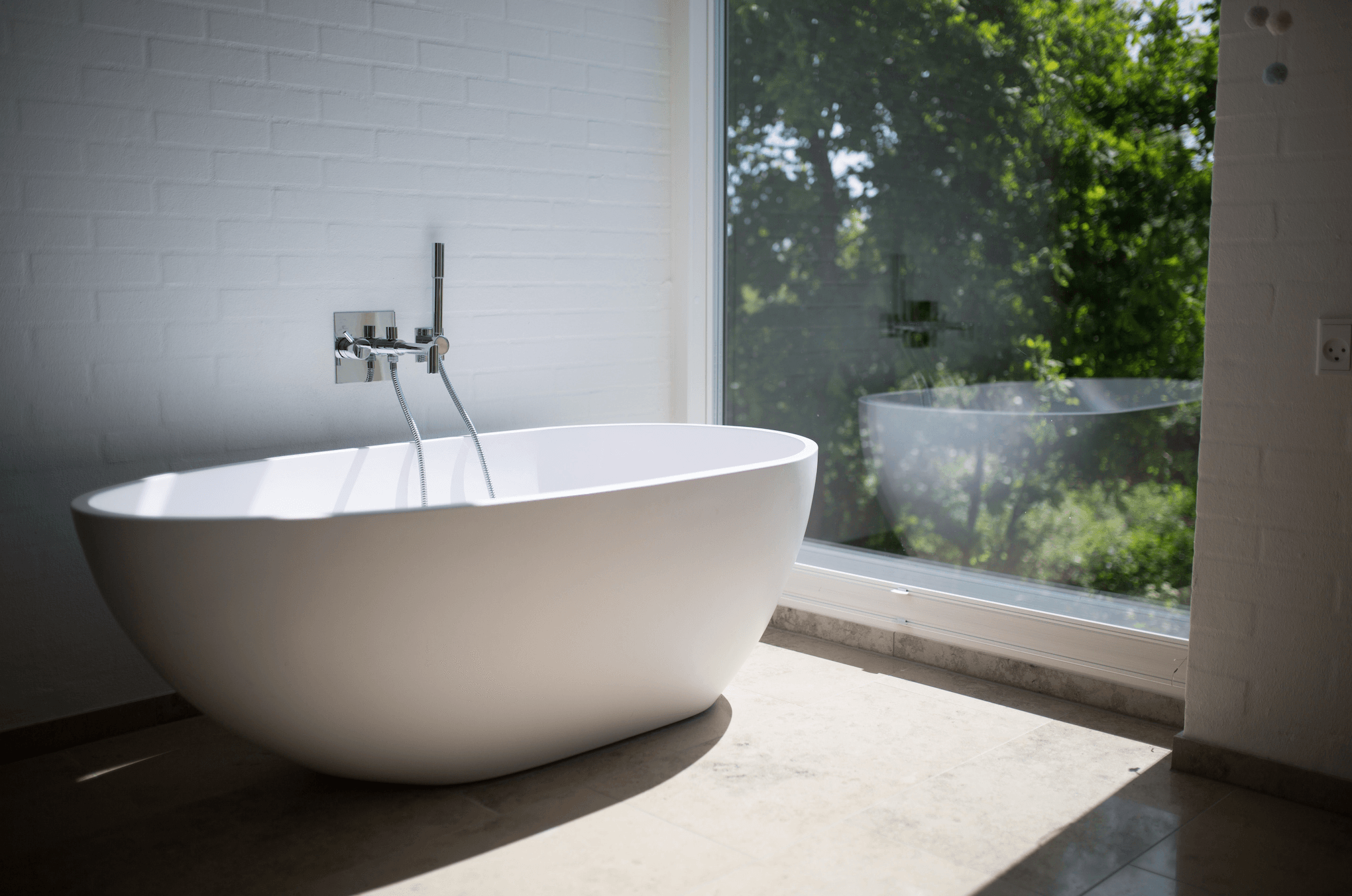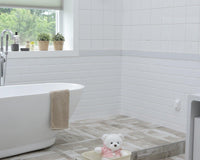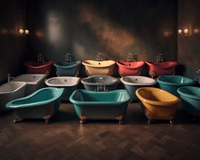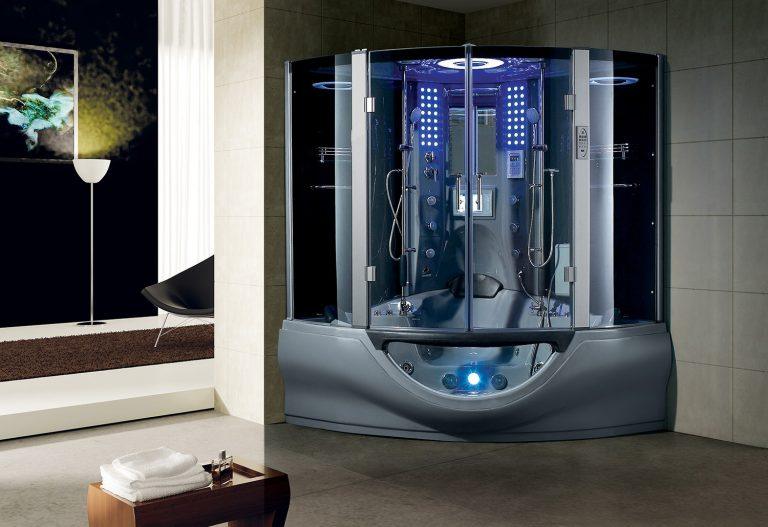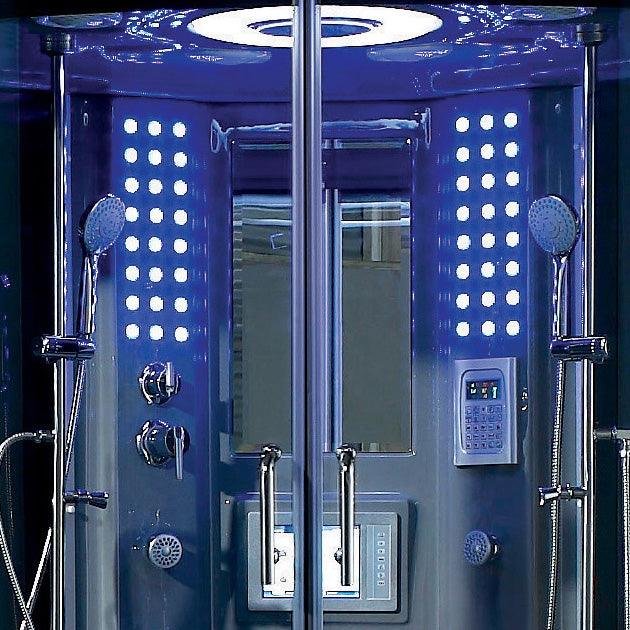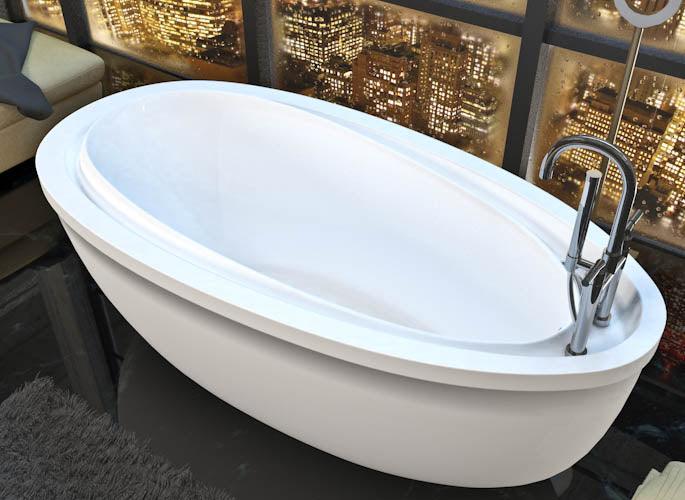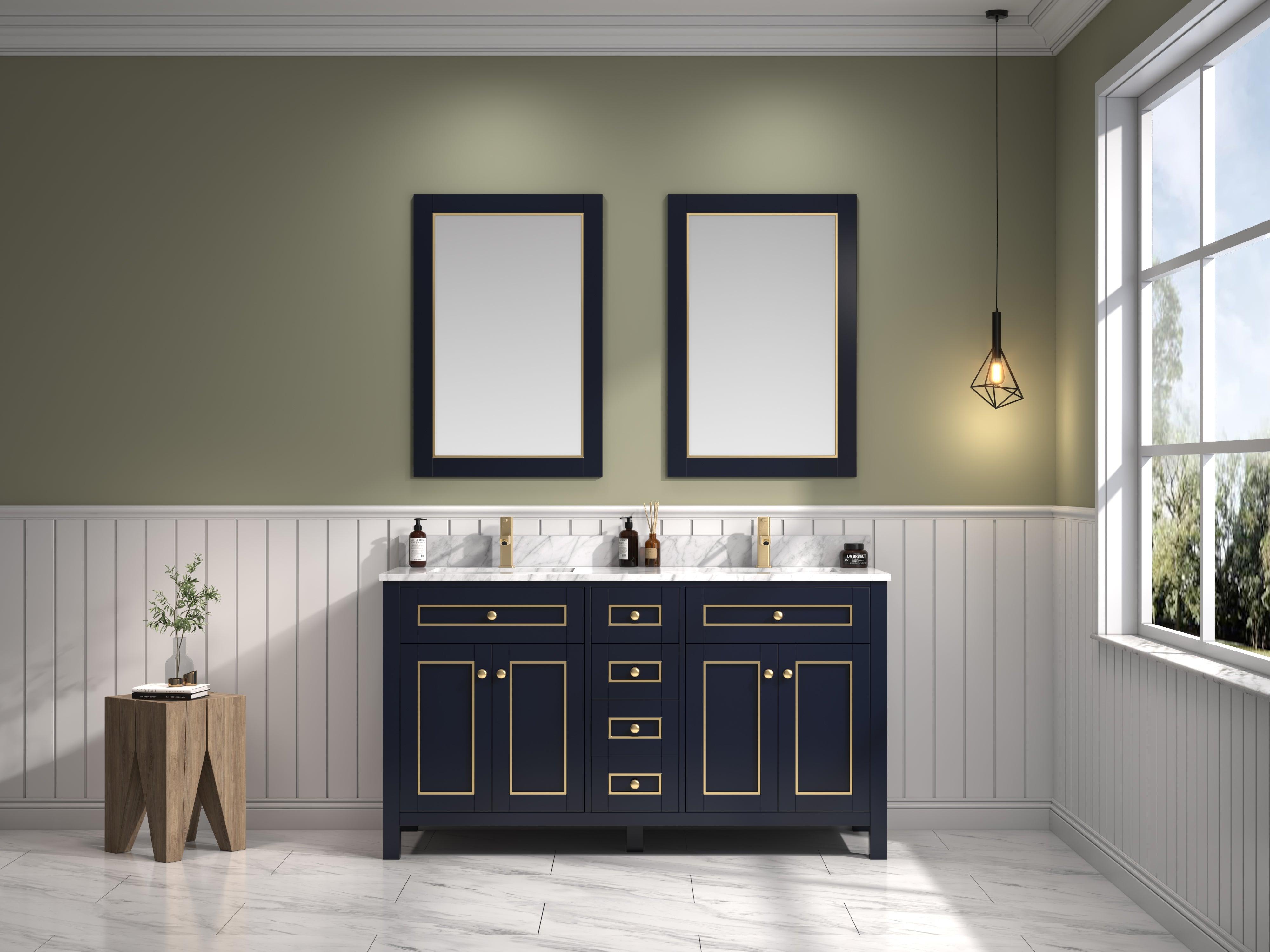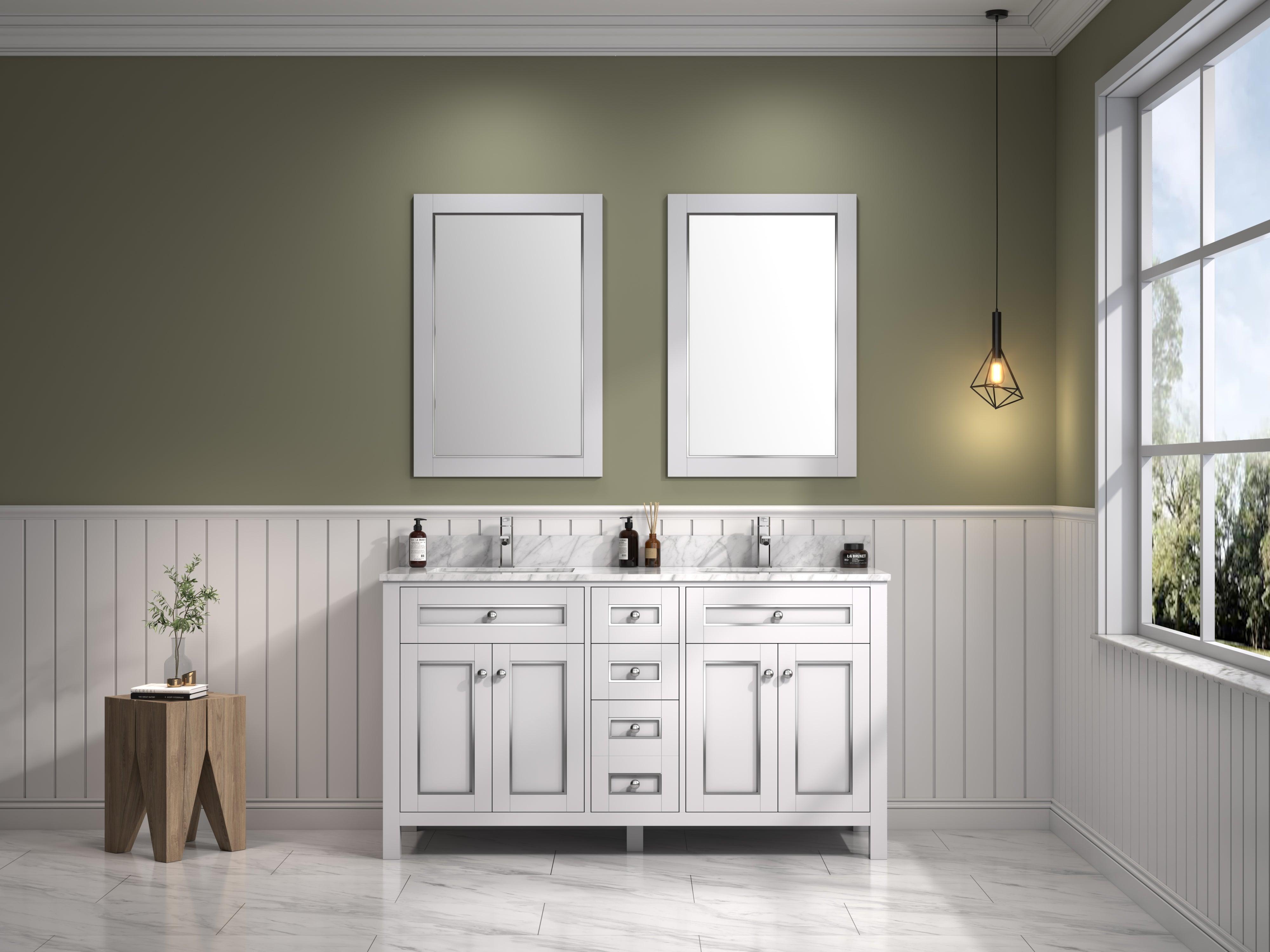As a bathtub materials expert, I have seen the variety of options available to homeowners when it comes to selecting a new tub. From porcelain to acrylic and even cast iron, there are pros and cons to each type of material that should be considered before making a purchase.
One primary factor in choosing a bathtub material is durability. Some materials may offer more longevity than others but can come at an increased cost.
Additionally, ease of maintenance, aesthetic appeal, and comfort also play important roles in deciding which bathtub material will work best for you and your home.
In this article, we'll explore some of the most popular bathtub materials on the market today and weigh their advantages and disadvantages so you can make an informed decision about which one is right for your bathroom renovation project.
Porcelain Bathtubs: Durability and Aesthetics
Porcelain bathtubs are a timeless classic, known for their durability and aesthetics. They have been used for decades in high-end homes due to their elegant look that never goes out of style.
However, porcelain may not be the best option if you're looking for cost-effective longevity. When it comes to durability vs. aesthetics, porcelain bathtubs score high marks on both counts. Porcelain is an incredibly hard substance that can last for generations with minimal upkeep. Moreover, its smooth surface gives it a luxurious feel that many homeowners love.
Despite these advantages, there's one significant drawback: porcelain bathtubs can be costly compared to other materials like fiberglass or acrylic. If cost vs. longevity is your primary concern, then porcelain may not be the right choice for you. Although they are extremely durable and long-lasting, they come at a premium price that may not fit everyone's budget.
Thus, those who want something more affordable yet still robust might prefer acrylic tubs instead as they offer excellent value for money while being lightweight and easy to install.
Acrylic Bathtubs: Lightweight and Affordable
Porcelain bathtubs are a classic choice for homeowners who prioritize durability and aesthetics. However, they may not be the most practical option for everyone.
If you're looking for something that's lightweight and affordable yet still offers a touch of luxury, then acrylic tubs might just be what you need.
Acrylic is an incredibly popular material when it comes to bathtub construction because it's durable enough to withstand daily use but also much lighter than porcelain or cast iron alternatives. This makes installation easier since there's less weight to support, which can save time and money on labor costs. Furthermore, acrylic is relatively easy to maintain, with only mild cleaning agents needed to keep its glossy finish intact.
The affordability of acrylic tubs is another benefit that shouldn't be overlooked. While some high-end models can get quite pricey, in general, this type of bathtub tends to cost significantly less than other materials like marble or copper.
That means even if your budget isn't huge, you should still be able to find an acrylic tub that fits both your needs and style preferences perfectly.
Fiberglass Bathtubs: Easy To Install and Maintain
Fiberglass bathtubs are a popular choice for homeowners due to their easy installation process and low maintenance requirements. Compared to other bathtub materials, fiberglass is lightweight and can be easily installed without the need for professional help. This makes it an ideal option for those who prefer DIY projects or have limited time.
In terms of maintenance, fiberglass bathtubs require minimal effort to keep them looking new. They are resistant to mold, mildew, and rust, which means you don't have to spend hours scrubbing stains off your tub. All you need is a non-abrasive cleaner and a soft cloth to wipe down the surface regularly.
One thing to note about fiberglass bathtubs is that they may not last as long as some other materials such as cast iron or porcelain. However, with proper care and regular cleaning, they can still provide many years of use before needing replacement.
Overall, if you're looking for an affordable and practical solution for your bathroom renovation project, a fiberglass bathtub could be the perfect fit.
When considering bathtub materials, another classic option worth exploring is cast iron. These bathtubs are known for their durability and timeless design. While they may be heavier than other options on the market, their longevity makes them a worthwhile investment in any home.
Cast Iron Bathtubs: Classic and Long-Lasting
Moving on from fiberglass, let's take a closer look at cast iron bathtubs. These classic tubs have been around for centuries and are known for their durability and weight. Cast iron is one of the most durable materials used in bathtub construction, which means these tubs can last for decades with proper care.
One major advantage of cast iron bathtubs is their weight. They are some of the heaviest tubs available, which provides stability during use and helps to prevent slipping or sliding. This added weight also makes them more difficult to install than other types of tubs, but once installed they don't move or shift easily.
However, there are some downsides to cast iron bathtubs as well. Their weight can make installation challenging without professional help, and they may not be suitable for upper-level bathrooms due to concerns about structural support. Additionally, if the enamel coating on the bathtub chips or cracks over time, it can be expensive to repair.
When considering a cast iron bathtub, it's important to weigh both the pros and cons before making a decision based solely on aesthetic appeal. If you're looking for a long-lasting option that will provide stability during use and stand up to years of wear and tear, then a cast iron bathtub could be right for you.
Stone Resin Bathtubs: Luxurious and Unique
Stone resin bathtubs are a luxurious and unique choice for any bathroom. They offer a variety of advantages, such as a durable and heat-resistant surface, an array of eye-catching designs, and easy cleaning.
However, there are some disadvantages too, such as their high cost and heavier weight compared to other materials.
All in all, stone resin is a great option for a durable, luxurious bathtub.
Advantages of Stone Resin Bathtubs
If you're looking for a luxurious and unique bathtub material, then stone resin is definitely worth considering. Stone resin bathtubs are made by combining crushed stone with a high-quality resin to create a durable and long-lasting product that can withstand daily use.
One of the biggest advantages of stone resin bathtubs is their low maintenance requirements. Unlike natural stone or traditional porcelain tubs, which require frequent sealing and cleaning to prevent stains and scratches, stone resin bathtubs are extremely easy to maintain. All you need to do is wipe down the surface with a mild cleanser and water every few weeks.
Another advantage of stone resin bathtubs is their cost-effectiveness compared to other luxury materials like marble or granite. While these materials may look stunning in your bathroom, they come with a hefty price tag. On the other hand, stone resin offers similar aesthetics at a much lower price point. This makes it an ideal choice for homeowners who want a luxurious-looking bathtub without breaking the bank.
When it comes to choosing the right bathtub material for your home, there are many factors to consider. While stone resin bathtubs offer numerous benefits over other materials, such as low maintenance requirements and affordability, it's still important to weigh all options carefully before making your final decision.
With proper maintenance tips followed regularly throughout ownership , however, any kind of tub will last longer than expected while providing its owner comfort during baths after long days.
Disadvantages of Stone Resin Bathtubs
Now that we've talked about the advantages of stone resin bathtubs, it's important to also consider their disadvantages. While these tubs offer many benefits over other materials, such as low maintenance requirements and affordability, they do have some drawbacks.
One disadvantage of stone resin bathtubs is that they come in limited finishes compared to other materials like porcelain or acrylic. Stone resin tubs usually only come in a matte finish and can't be polished like natural stone. This may not be an issue for those who prefer a more subdued look in their bathroom, but for those looking for different options in terms of finishes, this may be a downside.
Another potential disadvantage of stone resin bathtubs is that they are prone to scratching if proper care isn't taken during use. While they are durable and long-lasting when maintained properly, scratches can still occur from abrasive cleaning products or dropping heavy objects on the surface. It's important to follow manufacturer guidelines for cleaning and avoid using harsh chemicals or rough scrubbers on the surface to prevent damage.
In conclusion, while there are some downsides to choosing a stone resin bathtub, overall they remain an attractive option for homeowners seeking luxury at an affordable price point with low maintenance requirements. However, it’s always best to weigh all available options carefully before making your final decision based on personal preferences and budget constraints.
Copper Bathtubs: Rustic Charm and Durability
A copper bathtub is like a warm embrace on a chilly day. Its rustic charm evokes feelings of comfort, luxury, and relaxation. Copper bathtubs are gaining popularity among homeowners who seek to add a touch of elegance to their bathroom design while enjoying the benefits of durability.
Pros:
-
Durable: Copper is resistant to corrosion and rust, making it an excellent material for bathtubs.
-
Beautiful patina: As copper ages, it develops a beautiful patina that adds character and uniqueness to your bathtub.
-
Aged copper can add warmth to modern designs.
-
Patina also helps hide scratches or dents over time.
Cons:
-
High maintenance: Copper requires regular cleaning with mild soap and water to maintain its shine.
-
Expensive: Compared to other materials such as acrylic or fiberglass, copper bathtubs come at a premium price point.
-
However, investing in a high-quality copper bathtub can increase the value of your home.
-
It's important to consider the long-term cost savings from not having to replace cheaper materials frequently.
As a bathtub materials expert, I recommend considering a copper bathtub if you're looking for both style and longevity. While they may require some extra care compared to other materials, the beauty and durability make them worth the investment. With proper care, your copper tub will last for generations.
If you're drawn towards natural beauty and comfort in your bathroom design, you'll love our next topic – wood bathtubs.
Wood Bathtubs: Natural Beauty and Comfort
Copper bathtubs may exude rustic charm and durability, but they come with their own set of maintenance requirements. For those seeking a more eco-friendly option, wood bathtubs offer natural beauty while also providing comfort during baths.
Unlike copper, which requires regular polishing to maintain its luster, wood is relatively low-maintenance. However, it's important to choose the right type of wood for your bathtub as some varieties like cedar can be prone to cracking over time due to moisture exposure. In addition, proper sealing and occasional resealing will help prevent water damage and prolong the life of your wooden tub.
When it comes to eco-friendliness, wood has a clear advantage over materials like acrylic or fiberglass. It's a renewable resource that doesn't require much energy to produce compared to synthetic counterparts. Plus, at the end of its lifespan, a wooden bathtub can decompose naturally without leaving behind harmful chemicals in landfills.
| Pros | Cons | Maintenance |
|---|---|---|
| Natural beauty | Prone to cracking if not properly maintained | Requires periodic sealing |
| Comfortable material | Higher initial cost than other options | Avoid prolonged exposure to standing water |
| Eco-friendly choice | Limited style options compared to composite materials | Use gentle cleansers and avoid abrasive cleaning tools |
| Durable with proper care |
As someone knowledgeable on bathtub materials, I highly recommend considering all aspects before making a decision on which one suits you best. While wood offers an environmentally friendly alternative with minimal upkeep needs when compared to copper or other metal-based options available today -- there are still factors such as choosing the right type of wood and ensuring proper sealing techniques are used during installation that should be taken into account beforehand. Ultimately though it all depends on what fits your personal preferences so make sure you weigh out each pros/cons list carefully before settling down on anything!
Composite Bathtubs: Customizable and Durable
Composite bathtubs are an excellent option for those seeking durability and customization. But what exactly makes them so special? Let's take a closer look.
Firstly, composite materials are made up of several different components, including resins, fiberglass, and other natural or synthetic fibers. This unique blend results in a bathtub that is incredibly strong and long-lasting.
Additionally, these tubs can be customized with various finishes to match your bathroom decor perfectly.
While composite bathtubs do require some maintenance over time, they generally hold up well against wear-and-tear. Scratches can be repaired easily using simple DIY kits available on the market today.
The only downside to this material is that it may not be as budget-friendly as some other options out there.
In summary, if you're looking for a durable and customizable bathtub with low maintenance requirements, then composite may just be the perfect choice for you. With its strength and style potential combined, it's no wonder why many homeowners opt for this type of tub when renovating their bathrooms!
Frequently Asked Questions
What Is The Average Lifespan Of A Bathtub Made From Each Material?
As a bathtub materials expert, I often get asked about the durability of different bathtub materials. It's important to note that each material has its own pros and cons when it comes to longevity.
For example, acrylic bathtubs are known for their durability and can last up to 30 years with proper care. However, cast iron tubs have been known to last even longer with some lasting over 50 years.
Fiberglass tubs, on the other hand, tend to have a shorter lifespan and may need replacing after just 10-15 years. When comparing the durability among these materials, it's important to consider factors such as maintenance and usage frequency in addition to material composition.
Can Each Material Be Easily Repaired If It Becomes Damaged Or Scratched?
If your bathtub becomes damaged or scratched, the ease of repair will depend on the material it's made from.
Some materials like acrylic and fiberglass are relatively easy to DIY repair with a kit, but for more serious damage, professional repairs may be necessary.
Cast iron and porcelain tubs can also be repaired by professionals but tend to be less cost-effective options compared to acrylic and fiberglass.
Luxury materials such as marble or copper may require specialized skills for repairing and can come at a higher cost than other options.
It's important to consider not only the upfront cost of a bathtub material but also the potential costs of repairing any damages that may occur over time.
Which Materials Are The Most Resistant To Stains And Discoloration?
When considering bathtub materials, one of the key factors to consider is their resistance to stains and discoloration. Different materials have varying levels of susceptibility to these issues, which can be important considerations when deciding on a material for your bathroom.
Generally speaking, porcelain and enameled steel tend to be among the most resistant to staining and discoloration, while acrylic may require more careful cleaning methods to prevent these problems from occurring.
Of course, it's also important to factor in cost comparison when choosing a material - higher-end options like cast iron may offer superior durability but come at a premium price point compared to other available alternatives.
As with any home renovation decision, there are trade-offs involved in selecting different bathtub materials - finding the right balance between aesthetics, functionality, and budget will ultimately depend on your individual priorities as a homeowner.
Are There Any Health Concerns Associated With Certain Bathtub Materials, Such As Exposure To Chemicals Or Allergens?
As a bathtub materials expert, it's important to consider not only the durability and aesthetics of different materials but also any potential health risks.
Certain bathtub materials may expose individuals to harmful chemicals or allergens that can cause sensitivity concerns. For example, fiberglass bathtubs may release volatile organic compounds (VOCs) during manufacturing and installation, which can negatively impact indoor air quality.
Similarly, some people with allergies may react to certain types of metals used in bathtub fittings and fixtures.
It's crucial for homeowners to research and understand these chemical exposure risks and allergen sensitivity concerns before selecting a bathtub material for their home.
How Do The Different Materials Affect The Overall Weight And Installation Process Of The Bathtub?
Installing a bathtub can be as delicate as balancing on eggshells. The installation challenges and weight considerations vary depending on the material used for the tub.
As an expert in bathtub materials, I have seen firsthand how different materials affect the overall weight and installation process of a bathtub. Cast iron is one of the heaviest options, making it difficult to maneuver during installation.
Acrylic, on the other hand, is lightweight and easy to handle but may require additional support due to its flexibility. Fiberglass falls somewhere in between with moderate weight and manageable installation challenges.
When choosing your bathtub material, it's essential to consider not just its appearance or cost but also how it will impact your bathroom renovation project's practical aspects.
Conclusion
In conclusion, as a bathtub materials expert, it is safe to say that each material has its pros and cons. However, the differences between them are not so significant that one can be labeled as the ultimate winner. The average lifespan of most bathtubs varies from 10-15 years depending on usage and maintenance.
While some materials like acrylic or fiberglass can easily be repaired if scratched or damaged, others such as cast iron require more effort and professional assistance.
Similarly, certain materials like porcelain enamel are highly resistant to stains and discoloration, but they tend to chip easily. As for health concerns, non-toxic options such as copper or stone may be preferable for those with allergies or chemical sensitivities.
Lastly, when it comes to weight and installation process, lighter materials like acrylic would be easier to handle than heavier ones like cast iron or marble.
In conclusion, while no single material reigns supreme in every aspect, careful consideration of personal preferences and needs will lead you towards the best choice for your bathroom oasis!

